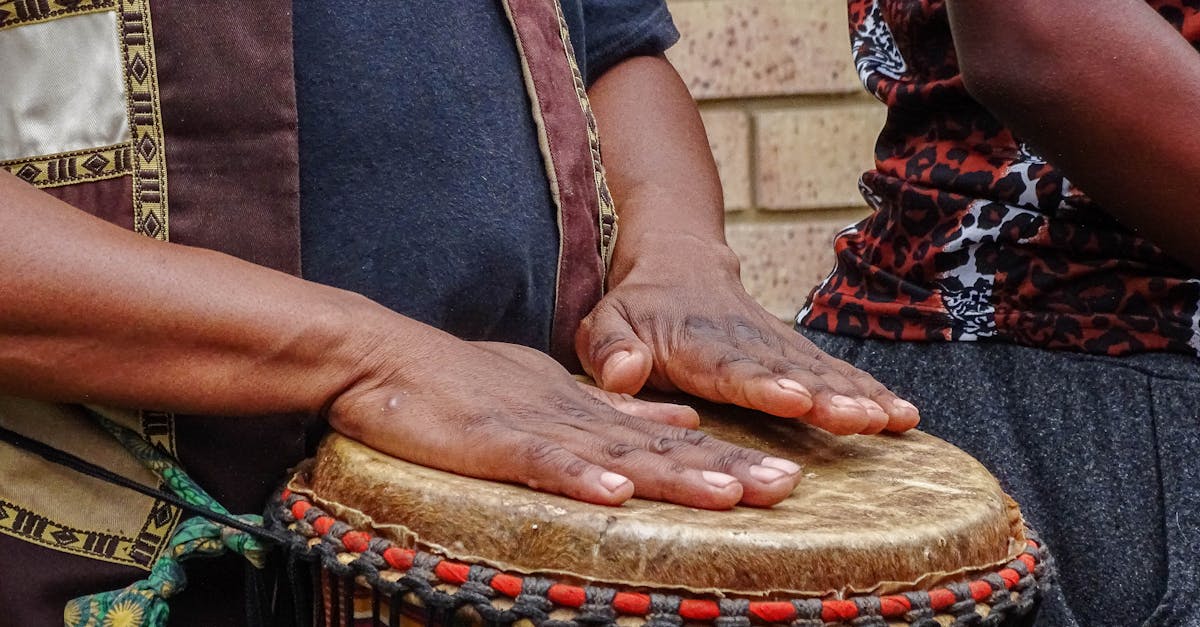Harmonic Horizons Navigating World Music
Introduction
World music is a captivating tapestry woven from the diverse sounds and rhythms of the globe. It offers a window into the soul of different cultures, showcasing a rich array of traditions and stories passed down through generations. From the pulsating beats of African drums to the serene harmonies of Asian melodies, world music transcends borders and unites people. What makes world music particularly enchanting is its ability to blend with contemporary genres, creating new and innovative sounds. As we delve into the harmonic horizons of world music, we unearth unique histories that reflect the evolution of human expression. Exploring world music is not only a musical journey but a celebration of cultural diversity that has the power to bring communities together.
Advertisement
The Birth of World Music
The concept of world music emerged in the late 20th century, labeling the various traditional music genres from around the world. Initially, it served as a point of connection between Western audiences and global sounds. This genre encompasses a wide variety of traditions, from Brazilian Samba to Indian Classical, allowing listeners to escape the confines of the familiar. The term first gained prominence in 1987 when music industry professionals coined it to categorize non-Western music releases. Since then, world music has blossomed, becoming a staple of music festivals and platforms. This expansion has opened a forum for dialogue and cultural exchange, presenting artists with opportunities to collaborate across continents.
Advertisement
African Rhythms and Influence
Africa, often regarded as the cradle of humanity, offers a rich musical heritage that predates written history. African music is synonymous with rhythm, employing countless percussion instruments that form the backbone of many traditional performances. The continent's traditional music is both a means of communication and a potent storytelling medium, reflecting the diverse cultures within its borders. Often, African rhythms serve as the foundation for numerous contemporary genres such as jazz, blues, and rock. Artists like Fela Kuti and Miriam Makeba have played monumental roles in bringing African music to international acclaim. Through the timeless power of rhythm, African music delivers messages of resilience, community, and celebration.
Advertisement
Asia's Melodic Landscapes
Asia, a continent steeped in ancient history, boasts a plethora of musical traditions characterized by melodic complexity and spiritual depth. Indian classical music, for instance, hinges on intricate ragas and talas, offering listeners a meditative journey into sound. Meanwhile, the harmonious sounds of Chinese guzheng and Japanese koto offer reflections of their respective cultures' aesthetics and philosophies. Across Asia, music frequently intertwines with religious and cultural practices, providing a sonic companion to rituals and celebrations. Contemporary Asian artists often fuse traditional music with Western influences, creating a fusion that resonates with global audiences today. This synthesis showcases the adaptability and timeless relevance of Asian musical traditions.
Advertisement
Europe's Musical Heritage
Europe holds a vast musical heritage, enriched by classical symphonies, folk traditions, and evolving pop scenes. Classical composers like Beethoven and Mozart laid the foundations for modern Western music, drawing inspiration from traditional European folk melodies and rhythms. Folk music, deeply rooted in European culture, varies stunningly across the continent—from the Irish jigs to the flamenco rhythms of Spain. Additionally, gypsy and Roma traditions contribute vibrant sounds and influence to European music. In contemporary times, European artists have seamlessly intertwined traditional elements with electronic and modern genres, continuing to innovate and redefine European music. This cultural exchange shapes Europe's ever-evolving musical identity.
Advertisement
The Richness of Latin American Music
Latin American music is a vibrant and diverse tapestry reflecting the blend of indigenous, African, and European influences. At its core is a rhythmic intensity that invites listeners to dance and celebrate life. Genres such as salsa, tango, and bossa nova have found global acclaim, while traditional forms like Andean panpipe music offer unique cultural insights. Music in Latin America often serves as an expression of social change and identity, as evidenced by movements like Nueva Canción in Chile. Renowned artists like Shakira and Carlos Santana showcase a fusion of Latin rhythms with mainstream appeal. These sounds embody the passion, resilience, and dynamic spirit of Latin American cultures.
Advertisement
Pacific Islands and Indigenous Traditions
The Pacific Islands are home to a wealth of musical traditions passed down through oral history, deeply connecting inhabitants to their ancestry. Indigenous music from this region is often characterized by chants, drumming, and string instruments like the ukulele, rooted in communal storytelling and celebration. Each island has distinct musical styles, from melodic Hawaiian hula chanters to the powerful sounds of Maori haka. Music plays an essential role in maintaining cultural identity, often intertwined with ceremonial practices and rituals. The contemporary fusion of Pacific Island music with reggae and hip-hop reflects a vibrant evolution that speaks to younger generations, maintaining the connection between past and present.
Advertisement
Middle Eastern Soundscapes
The Middle East offers a musical panorama rich with spiritual depth and emotive expression. Its music is renowned for utilizing intricate scales and maqams, creating haunting melodies and complex rhythms. Traditional instruments such as the oud, qanun, and darbuka provide distinctive sounds that define the region's music. Middle Eastern music often centers on themes of love, spirituality, and identity, resonating deeply with listeners. In recent years, artists like Omar Souleyman have gained international fame, popularizing blends of traditional and electronic music. This cross-pollination of styles revitalizes cultural music traditions while continuing to inspire and engage a global community.
Advertisement
Blending with Mainstream
World music’s influence on the mainstream music industry is more evident than ever, with artists across genres incorporating global elements into their productions. The vast reach of the digital age allows traditional sounds to be sampled and integrated into pop, rock, and electronic music, creating hybrids that are both innovative and culturally rich. Encounters between global artists catalyze new collaborations and ideas, fostering a vibrant musical ecosystem. The rise of platforms like YouTube and Spotify provides unprecedented access to world music, allowing listeners to discover and savor sounds from far-off lands. As global exposure grows, world music continues to inspire and redefine popular music, cultivating a rich and diverse sonic landscape.
Advertisement
Conclusion
World music embodies the beauty and complexity of human cultures, acting as a universal language that transcends borders. Through its rich tapestry of sounds, it bridges historical narratives with contemporary expression, enriching the global music scene. With technology fostering collaboration and exposure, world music will continue to evolve and inspire. As audiences broaden their musical horizons, they contribute to cultural preservation and appreciation. In celebrating the diverse soundscapes of the world, we honor the vibrant cultural legacies that shape our shared human experience.
Advertisement







